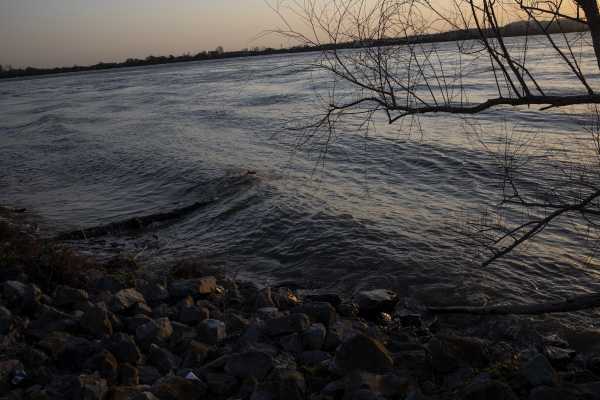
For decades, the Supreme Court struggled to define a key term at the heart of the Clean Water Act, the landmark 1972 legislation that forms the backbone of America’s efforts to “restore and maintain the chemical, physical, and biological integrity of the Nation’s waters.”
It’s an admittedly difficult question, that is now in the hands of the most conservative Supreme Court since the 1930s. And the Court’s Republican-appointed supermajority seems poised to deal a severe blow to the clean water law, in a case that could do significant harm to America’s efforts to prevent floods and to ensure that everyone in the country has access to safe drinking water.
The Clean Water Act prohibits “discharge of pollutants” into “navigable waters.” But it also defines the term “navigable waters” vaguely and counterintuitively, to include all “waters of the United States, including the territorial seas.” In Rapanos v. United States (2006), the Supreme Court’s last attempt to define the key phrase “waters of the United States,” the justices split three ways, with no one approach winning majority approval from the Court.
What do you think of Vox? Tell us!
We want to get to know you better — and learn what your needs are. Take Vox’s survey here.
Now, Sackett v. EPA brings this question to a Court that’s moved dramatically to the right after former President Donald Trump filled a third of its seats. Though the specific dispute in Sackett seems minor — it involves a couple that wants to fill in wetlands on their residential lot near an Idaho lake — the case still gives the Supreme Court everything it needs to hamstring much of the landmark anti-pollution legislation.
Even in the best-case scenario for environmentalists, the Court’s new majority is likely to embrace the narrow reading of the Clean Water Act proposed by the late Justice Antonin Scalia in his Rapanos opinion. That approach, according to an amicus brief filed by professional associations representing water regulators and managers, “would also exclude 51% (if not more) of the Nation’s wetlands” from the Act’s protections, and could potentially exclude an even greater percentage of the nation’s streams.
Meanwhile the plaintiffs in Sackett, no doubt feeling emboldened by the Supreme Court’s recent hostility to environmental regulation, have come up with a reading of the Clean Water Act that is more restrictive than any of the approaches proposed by any justice in Rapanos. According to their brief, the “waters of the United States” are “limited to traditional navigable waters and intrastate navigable waters that link with other modes of transport to form interstate channels of commerce.”
If that approach prevails, huge numbers of streams, drainage ditches, and other small tributaries that may flow into major bodies of water — but that are not themselves large enough to be navigated by ships and other watercraft — could abruptly lose the Clean Water Act’s protections.
The stakes in Sackett are high because America’s waterways are so interconnected. Wetlands, even wetlands that do not directly border rivers or lakes, act as filtration systems that slow the seepage of pollutants into major waterways. And they also act as sponges that help control floods. Small streams, human-made drainage, and other narrow waterways typically empty into other bodies of water. So, if wetlands, streams, and the like are not protected from pollution, that pollution will inevitably poison major waterways.
But environmentalists have little reason to be optimistic about the Clean Water Act’s future after the law is interpreted by this Supreme Court.
The three approaches laid out in Rapanos, briefly explained
Once upon a time, Sackett would have been a fairly easy case. When federal laws are ambiguous, the Supreme Court’s decision in Chevron v. Natural Resources Defense Council (1984) typically instructs the courts to defer to an expert federal agency’s interpretation of that law. And the Biden administration is currently finalizing an interpretation of the phrase “waters of the United States” that merges both Scalia’s narrow definition and a more expansive definition offered by Justice Anthony Kennedy in Rapanos.
Indeed, in an opinion joined by the 2006 Court’s liberal minority, Justice John Paul Stevens argued that the Court should largely leave the question of which waters qualify as “waters of the United States” to executive branch agencies. The executive’s determination that certain wetlands are subject to Clean Water Act regulation, Stevens wrote in his Rapanos dissent, “is a quintessential example of the Executive’s reasonable interpretation of a statutory provision” which is entitled to deference under Chevron.
But Stevens’s deferential approach only received four votes. Four other justices, including three members of the Court’s current Republican-appointed majority, joined Scalia’s opinion calling for much stricter limits on the Clean Water Act.
“The phrase ‘the waters of the United States,’” Scalia claimed, includes only “relatively permanent, standing or continuously flowing bodies of water.” His definition does not include “channels through which water flows intermittently or ephemerally, or channels that periodically provide drainage for rainfall.”
Scalia added that wetlands are only subject to the Act if they have a “continuous surface connection” with a “relatively permanent body of water” that makes it “difficult to determine where the ‘water’ ends and the ‘wetland’ begins.”
As mentioned above, an amicus brief filed by experts on water regulation and management argues that Scalia’s definition would “exclude 51% (if not more) of the Nation’s wetlands.” It would also exclude many wetlands (and potentially, many streams and other bodies of flowing water) for completely arbitrary reasons. Because Scalia’s test requires a “surface” connection, for example, a wetland that connects to a major river via an underground channel would be beyond the Act’s ban on pollution — even though pollutants can flow through an underground stream just as surely as they can flow through a surface channel.
In any event, Scalia’s approach did not carry the day in Rapanos. The sole remaining justice, Kennedy, carved out a middle ground between Scalia and Stevens which called for less deference to federal agencies than Stevens advocated, but that also read the Clean Water Act more expansively than Scalia.
Under Kennedy’s definition, wetlands (and, most likely, narrow waterways) are subject to the federal law if they “significantly affect the chemical, physical, and biological integrity of other covered waters more readily understood as ‘navigable.’” Thus, Kennedy’s rule looks at the nation’s water systems as a whole, and would prohibit pollution that meaningfully impacts important bodies of water — even if that pollution is discharged into a wetland that may be some distance from a major river or lake.
Why are wetlands so important?
The Sackett case is primarily a case about wetlands. In 2004, plaintiffs Chantell and Michael Sackett bought what a federal appeals court described as a “soggy residential lot” near Priest Lake in Idaho. The Sacketts have spent the last 14 years in litigation over whether they may fill in wetlands on this lot with sand and gravel.
(One reason why this case has gone on for so long is that it already took one trip up to the Supreme Court, in 2012, to determine whether the Sacketts filed their lawsuit prematurely. A unanimous Court determined that they did not.)
It’s reasonable to wonder why the government is fighting so hard to prevent the Sacketts from dumping sand and gravel — as opposed to, say, toxins — on their land. The answer is that even natural fillers like sand can destroy a wetland, and the government argues that wetlands play an essential role in maintaining a healthy national water system.
As the government explains in its brief, wetlands “provide flood control and trap and filter sediment and other pollutants that would otherwise be carried into downstream waters.” Similarly, the water managers’ brief explains that wetlands are particularly important because they are “more efficient at pollutant removal than other waters thanks to the slow, sometimes infrequent, rate at which water moves through them.”
Although maintaining wetlands does create costs — just ask the Sacketts, who were unable to develop their land for years — the water managers argue that preserving wetlands, headwaters, and other structures that efficiently filter the water supply “is less costly and more effective to prevent a loss in water quality than to treat contaminated water later on.”
In the likely event that the Court adopts Scalia’s proposed rule in Rapanos, that could place most of the nation’s wetlands beyond the Clean Water Act’s anti-pollution safeguards. And the Sackett plaintiffs ask the Court to go much further than Scalia would have gone, limiting the law’s protections to “navigable” waters. (The plaintiffs do concede that “non-navigable wetlands inseparably bound up with such waters” should also be protected.)
There are a few reasons to doubt that the Court will take this maximalist approach. Among other things, none of the justices in Rapanos, including the three current justices who joined Scalia’s opinion, took such an extreme view in 2006. And the government notes in its brief that the plaintiffs previously told the Supreme Court that they were “not disputing ‘the extent to which the Clean Water Act regulates tributaries of traditional navigable waters.’” So the Court may be reluctant to reward these plaintiffs for trying to expand the scope of the case midway through Supreme Court review.
Even if the Court does not accept the plaintiffs’ most expansive proposal, however, the stakes in this case remain quite high. Scalia’s rule would fundamentally alter America’s clean water regime, potentially removing the majority of wetlands from the Clean Water Act’s protections. And it would do so based on arbitrary distinctions such as whether the wetlands feed into larger bodies of water via a “continuous surface connection” or something more transient or subterranean.
And, without protection for these wetlands, America’s water system could lose much of its ability to filter pollutants out of our drinking water.
Our goal this month
Now is not the time for paywalls. Now is the time to point out what’s hidden in plain sight (for instance, the hundreds of election deniers on ballots across the country), clearly explain the answers to voters’ questions, and give people the tools they need to be active participants in America’s democracy. Reader gifts help keep our well-sourced, research-driven explanatory journalism free for everyone. By the end of September, we’re aiming to add 5,000 new financial contributors to our community of Vox supporters. Will you help us reach our goal by making a gift today?
Sourse: vox.com






